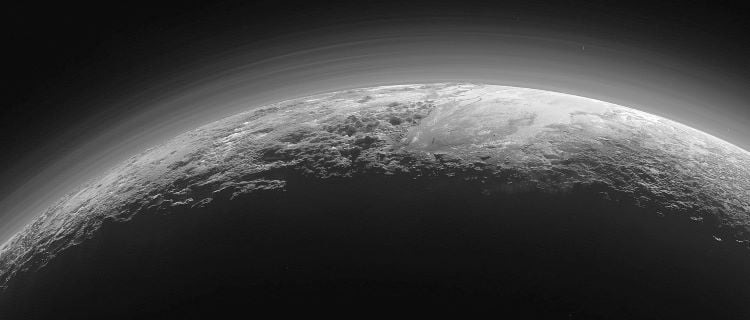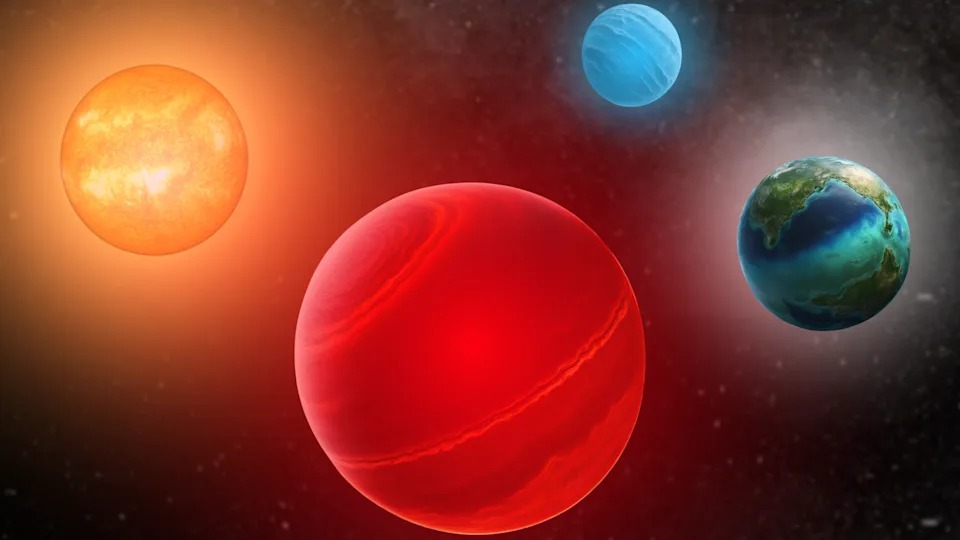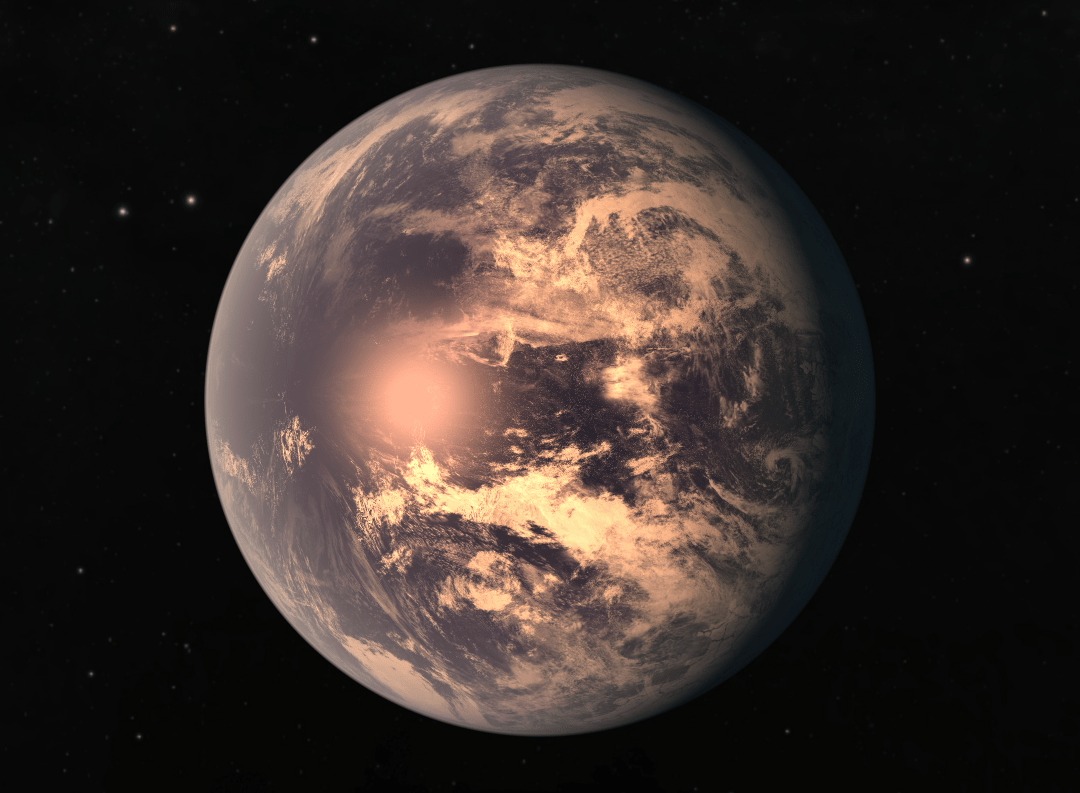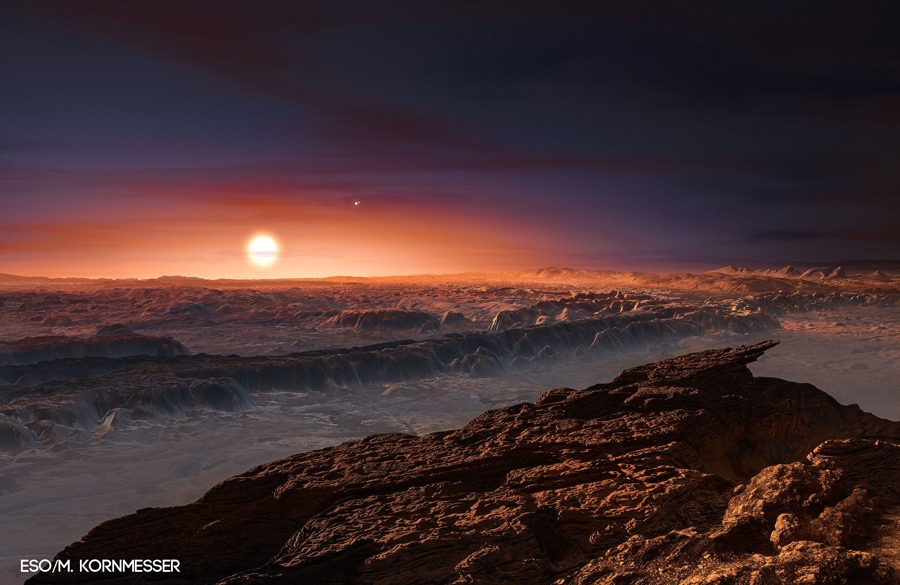I am ready to write this article for your space website. The topic of planetary atmospheres is crucial to the search for life, and I can explain its importance in a clear and accessible way.
The Breath of a World: What Can Planetary Atmospheres Tell Us?
If you were to look at our planet from far away in space, you would see a beautiful blue marble wrapped in a thin, hazy blanket. This blanket is our atmosphere. It is a protective layer of gas that gives us the air we breathe, shields us from the Sun’s most harmful rays, and keeps our planet warm enough for liquid water to exist. Without it, life on Earth would not be possible.
Every planet in our solar system, and many of the planets we have found around other stars, have an atmosphere. But they are all very different from each other. They come in all sizes and are made of a huge variety of gases. To a scientist, a planet’s atmosphere is like a book. It holds all the clues about a planet’s past, its weather, and its potential for life. In this article, we will take a deep dive into the secrets of planetary atmospheres, exploring how we study them and what they can tell us about a world.
What Is a Planetary Atmosphere? A Planet’s Blanket
A planetary atmosphere is a layer of gases that a planet holds around itself with its gravity. The size of the atmosphere and what it is made of depend on a few key things:
- The Planet’s Gravity: A planet with a lot of gravity, like Jupiter, can hold on to a very thick atmosphere. A planet with a small amount of gravity, like Mars, can only hold on to a very thin atmosphere.
- The Planet’s Temperature: A very hot planet’s atmosphere can escape into space more easily than a cold planet’s atmosphere. This is why a planet like Venus, which is very hot, has a much thicker atmosphere than a cold planet like Mars.
- The Planet’s History: A planet’s atmosphere is not a static thing. It can change over billions of years. For example, the atmosphere of Earth was once very different from what it is today. It had almost no oxygen until life began to produce it.
Our own atmosphere is mostly made of nitrogen and oxygen. The atmospheres of Venus and Mars are mostly made of carbon dioxide. The giant planets, like Jupiter and Saturn, have atmospheres that are made mostly of hydrogen and helium. These different gases are what tell us the story of each planet.
How Do We Study Atmospheres? Reading a Planet’s Story
Studying the atmosphere of a planet in our own solar system is a little easier. We can send probes, rovers, and orbiters to these planets to get a close-up look at their atmospheres. But to study the atmosphere of an exoplanet that is light-years away, we have to use very clever and indirect methods.
The Transit Method
The main way we study the atmospheres of exoplanets is with a method called transit spectroscopy. This method works when an exoplanet passes in front of its star from our point of view. When this happens, a tiny amount of the starlight passes through the planet’s atmosphere.
The gases in the planet’s atmosphere absorb some of the starlight at specific colors or wavelengths. By looking at the light that makes it through the atmosphere, scientists can see the colors that are “missing.” These missing colors create a kind of “fingerprint” that tells us what chemicals are in the planet’s air. For example, if we see that a lot of red light is missing, it could be a sign that there is a lot of a specific gas in the atmosphere that absorbs red light.
The James Webb Space Telescope (JWST) is the most powerful tool we have for this kind of work. It can see in infrared light, which allows it to pick up the chemical fingerprints of gases like water vapor, carbon dioxide, and methane.
What Can an Atmosphere Tell Us? The Secrets of a Planet
A planet’s atmosphere can tell us a lot of different things about a world, some of them very surprising.
Clues to Past and Present Life
This is the most exciting thing an atmosphere can tell us. Scientists are looking for what they call biosignatures, which are chemicals in an atmosphere that can be a sign of life. A good example of a biosignature is oxygen. On Earth, our atmosphere has a lot of oxygen, which is produced by plants and other life. On a planet without life, oxygen is a very reactive gas, and it would not last long. So, if we find a lot of oxygen on a planet, it could be a strong sign of life.
Another biosignature could be a mix of gases that would not normally be found together, like a lot of methane and a lot of oxygen. On Earth, methane is created by living things, and it reacts with oxygen. So, if we find a lot of both gases in an atmosphere, it could be a sign that life is constantly producing them.
The Planet’s History
An atmosphere can tell us about a planet’s past. For example, the atmosphere of Mars is very thin and cold. But by studying its composition, scientists have learned that it was once a much warmer planet with a thicker atmosphere. The thin atmosphere today is a sign that the planet lost a lot of its air over billions of years. By comparing the atmospheres of Earth, Venus, and Mars, we can learn about how a planet’s atmosphere can evolve and change over time.
The Planet’s Weather and Climate
An atmosphere can also tell us about a planet’s weather and climate. For example, the atmosphere of Venus is extremely thick and is almost entirely made of carbon dioxide. This carbon dioxide has created a “runaway greenhouse effect,” which has made the planet’s surface incredibly hot (about 867 degrees Fahrenheit, or 464 degrees Celsius). By studying the atmosphere of Venus, we can learn about what happens when a planet’s climate goes out of control.
We can also study the huge storms on Jupiter and the methane weather on Titan to learn about different kinds of weather and climate systems.
The Planet’s Water
Water is essential for life, so finding water is a top priority. A planet’s atmosphere can tell us if there is water on that planet. The James Webb Space Telescope has found water vapor in the atmospheres of many exoplanets. This is a huge discovery and a big step forward in the search for life. While finding water vapor does not mean there is life, it does mean that the planet has a key ingredient for life as we know it.
Our Own Solar System’s Atmospheres: A Family of Worlds
We can learn a lot by looking at the atmospheres of our cosmic neighbors.
- Venus: The atmosphere of Venus is a reminder of what can happen when a planet’s climate gets out of control. Its thick atmosphere of carbon dioxide has trapped a huge amount of heat, making it the hottest planet in our solar system.
- Mars: The thin atmosphere of Mars is a reminder of how precious and fragile our own atmosphere is. It shows us what happens when a planet loses its climatic balance and becomes a cold, dry desert.
- Jupiter and Saturn: These giant planets have atmospheres that are very different from Earth’s. They are mostly made of hydrogen and helium, and they have huge storms that have lasted for hundreds of years. Studying them helps us understand how weather and climate work on a much larger scale.
By comparing our own atmosphere to the atmospheres of other planets, we can gain a better understanding of how our own planet works and what we need to do to protect our climate.
Conclusion
A planetary atmosphere is more than just a layer of gas; it is a key to a world’s secrets. It holds clues about a planet’s history, its climate, and its potential for life. The search for life in the universe is a search for atmospheres that have the right chemical “fingerprint” of life. With powerful new tools like the James Webb Space Telescope, we are now able to study the atmospheres of distant exoplanets in great detail, looking for signs of water, oxygen, and other biosignatures. The quest to understand what is in a planet’s atmosphere is a journey that will not only help us find our cosmic neighbors but will also give us a better understanding of our own place in the universe.











